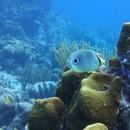Spinal cord injuries are notoriously difficult to treat, especially for those who have been paralyzed for several years.
Now, researchers have developed a new implant that is able to reverse paralysis in patients with complete spinal cord injuries. The device uses specially designed electrodes, which bring the brain back into communication with the patient’s lower body. The findings were recently published in the academic journal Nature Medicine.
Ira talks with the study’s co-authors, Jocelyne Bloch, a neurosurgeon at Lausanne University Hospital, and Grégoire Courtine, professor of neuroscience at the Swiss Federal Institute of Technology, based in Lausanne, Switzerland.
Could Protein-Based Vaccines Help Close The Global Vaccination Gap?
A new generation of COVID-19 vaccines are being developed and distributed around the world. They’re called recombinant-protein vaccines. But the tech is actually not at all new. In fact, It’s been used to produce hepatitis C and pertussis vaccines for decades.
These protein-based vaccines have an edge over mRNA vaccines in a few ways. They’re just as effective, cheaper and simpler to manufacture, and easier to distribute. So why, two years into the pandemic, have they just started gaining traction? And can recombinant-protein vaccines help close the global coronavirus vaccination gap?
Ira discusses these developments with Dr. Maria Elena Bottazzi, the co-creator of Corbevax, a patent-free protein-based vaccine, for which she was recently nominated for the Nobel Peace Prize. She’s also the co-director of the Center for Vaccine Development at Texas Children’s Hospital, and a professor at the Baylor College of Medicine, based in Houston, Texas.
How Cuba Developed Five COVID-19 Vaccines
Cuba was able to quickly produce five coronavirus vaccines, thanks to the island’s robust biotech industry. For decades, Cuba has produced its own home-grown vaccines and distributed them to neighboring countries.
But sanctions and political dynamics have complicated Cuba’s ability to distribute their COVID-19 vaccines with the world.
Ira talks with Helen Yaffe, senior lecturer of economic and social history at Glasgow University, and author of We Are Cuba! How a Revolutionary People Have Survived in a Post-Soviet World.
Fish Make More Noise Than You Think
One of the most famous films of undersea explorer Jacques Cousteau was titled The Silent World. But when you actually stop and listen to the fishes, the world beneath the waves is a surprisingly noisy place.
In a recent study published in the journal Ichthyology & Herpetology, researchers report that as many of two-thirds of the ray-finned fish families either are known to make sounds, or at least have the physical capability to do so.
Some fish use specialized muscles around their buoyancy-modulating swim bladders to make noise. Others might blow bubbles out their mouths, or, in the case of herring, out their rear ends, producing “fish farts.” Still other species use ridges on their bodies to make noises similar to the way crickets do, grind their teeth, or snap a tendon to sound off. The noises serve a variety of purposes, from calling for a mate to warning off an adversary.
Aaron Rice, principal ecologist in the K. Lisa Yang Center for Conservation Bioacoustics at the Cornell Lab of Ornithology in Ithaca, walks Ira through some of the unusual sounds produced by known fish around the world—and some mystery noises that they know are produced by fish, but have yet to identify.

science-friday021822b.mp3 (47:27, 43MB)
Did you find this article useful? Let us know by pinning us!
